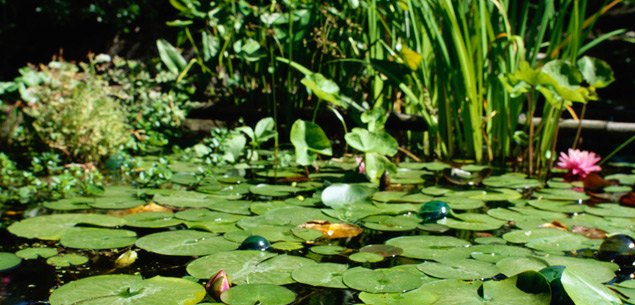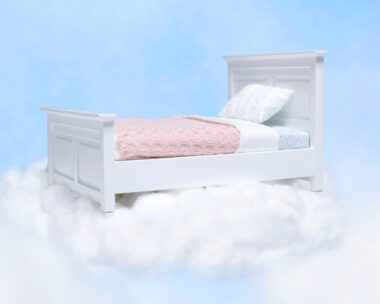According to the internet, “fishpond” is an online store selling books, music, and movies. Hmm. I thought it was a big marble basin filled with clear blue water and a couple of designer goldfish.
That’s always been my idea of the perfect fishpond, but the reality is, keeping such a pond pristine is a task beyond me. I always find myself defeated by drowned flies, rotting leaves, algae and a healthy population of mosquito larvae.
Unless you want to hire a full-time housekeeper to keep your pool perfect, you’ll need plants and fish. Even then, it’ll look like a pond and not like a high-end water feature. For gardeners, creating a pond is an opportunity to discover new plants and a whole lot of new information. But you need to know what works.
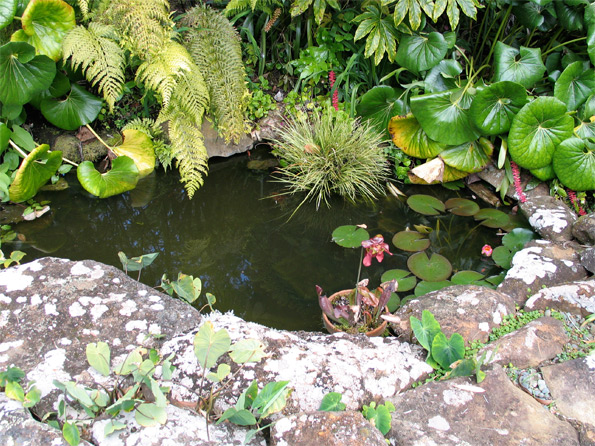
Common pondweeds can be used to give good surface coverage and don’t need to be potted. This pond has been created using a pond liner, which is disguised by the stone edging.
The quickest way to get a pond is to buy a pre-formed, rigid liner in the size and shape you want. If you’re having fish, the depth needs to be around 60cm so that a reasonably even temperature can be maintained. Dig the hole, sink the pond into it and create a pleasant environment for the inhabitants.
Fish like shade, cover and places where they can hide from marauding cats. If you’re wildlife-friendly, you might also like to create a couples of ledges and a gentle slope at one end to facilitate the escape of drowning hedgehogs.
Ledges also give you somewhere handy to put plants that thrive in shallow water. Plants for ponds can be loosely divided into three main categories. There are deep-water oxygenators that can tolerate conditions from boggy grounds to depths of up to 60cm of water above their crown.
Water lilies are considered deep-water plants, with tropical, hardy and miniature varieties available. The ideal planting depths can vary so check the label. Marginal plants like their roots in the water so they’ll do well around the edge of a pond. Some examples are the irises ophiopogon and elegia eapensis.
Bog plants like the damp and you should position these on the side of ponds to help stabilise soil. Many bog plants will also grow in normal garden locations. To maintain a healthy environment, you need to cover about 70% of the surface of your pond with foliage.
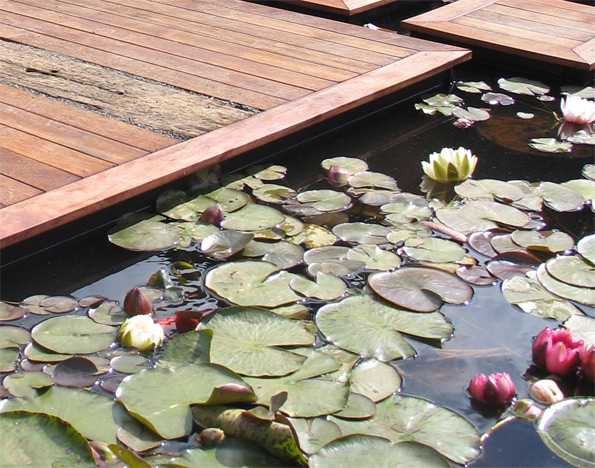
A timber deck built out over the pond provides a pleasant place to sit and watch the gold
Algae will thrive if the surface of the water is constantly exposed to sunlight, so shade the surface with floating plants and water lilies. You can also use some trellising across part of the surface. Deep-water oxygenators will help too and, failing that, try algaecides.
A somewhat more technical solution is a UV clarifier, where the water is passed through a sleeve which contains a UV bulb to kill off the algae.
Blanketweed is even harder to kill off. It likes a high pH so if you have a concrete water feature or your pond is lined with river stones, you’re a target. You’ll need to manage the pH, and there are products available to balance it. You can use an algaecide on it but it’ll come back unless you have the pH right.
Our pond is a well-cured concrete semi-circle. Because it’s only about 1200mm across we’ve added a small pump to keep the water moving and discourage mozzies. There are big stones and a couple of large shells in the bottom so the fish have somewhere to play and plenty of foliage cover on the top.
Because none of our local garden centres specialise in water plants we’ve relocated oxygen weed and pond weed from our stream. To check out what you can’t put in your pond, consult your council’s website.

Plants
Choosing plants for your pond area will open up a whole new range of species you may not have met before:
Golden moneywort – lovely rounded, coin-shaped foliage that trails away from the centre. Can be submerged by 30cm in ponds, or planted in moist gardens.
Pond pickerel – a lily-like plant that prefers 5 to 20cm depth. It has lush green foliage and striking blue flowers on 80cm stems all summer long.
Native water ranunculus – small and lace-like, with green scalloped leaves and tiny yellow flowers. This also grows on muddy edges.
Vietnamese mint – a fragrant, culinary mint which spreads 90cm across the top of the water.
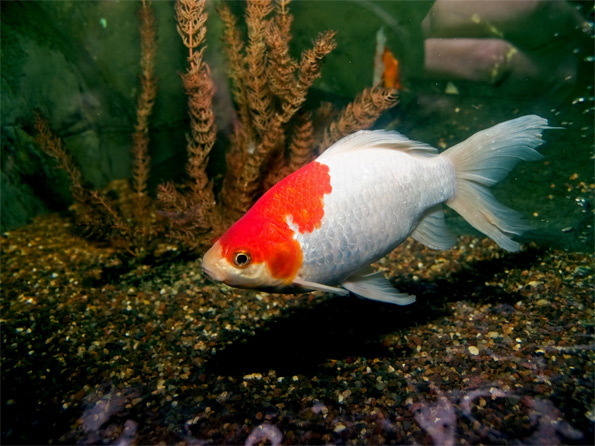
Pot of gold
Once the plants have acclimatised, take the kids and go to the pet shop to choose your fish. I took my big kid, who chose two regular goldfish. Goldfish come in a number of selectively bred varieties, with differences in body shape, size, colour, finnage and eye shape. They are quite hardy, although some are tougher than others.
I picked two goldfish called Shubunkins, which are among the hardiest varieties. Goldfish should cope with low temperatures, provided the pond doesn’t freeze. Summer temperatures of up to 28C shouldn’t be a problem either, provided there’s adequate filtration and aeration.
Safe water parameters for goldfish are pH 7-8, kH 3-7, gH 6-16, ammonia 0 mg/L, nitrite 0 mg/L, and nitrate 0-20 mg/L. It’s a good idea to change at least 30% of the water every couple of weeks. If you’re replacing it with tap water, treat it with a water conditioner.
You can feed your pond fish daily during late spring and summer, but don’t feed them if pond temperatures drop below 10C as their metabolism slows down and food won’t be properly digested.
